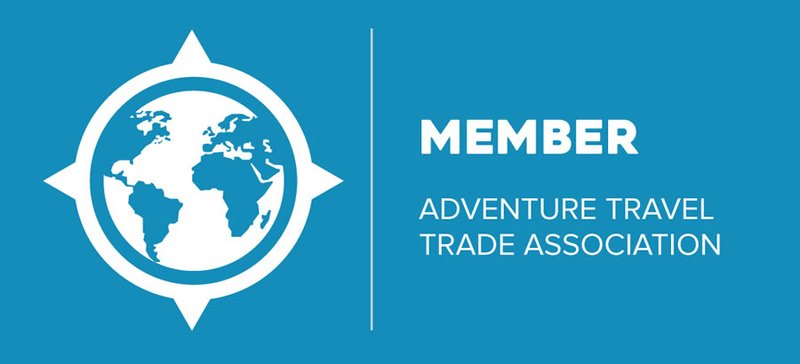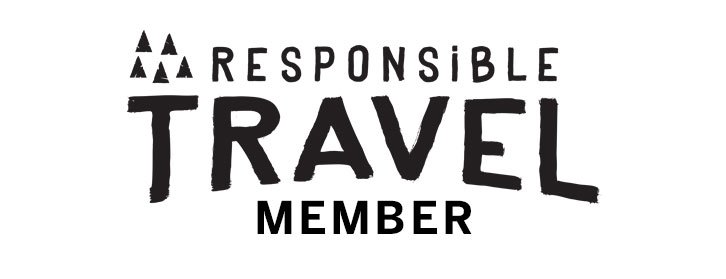Ready to plan your dream trip to Ireland or preparing to join a trip? To help you make the absolute most out of your explorations on the Emerald Isle, we’ve compiled the very best tips which we’ve gathered from years of experience exploring Ireland! Don’t find yourself caught without essential items, surprised by car rental details, waiting in lines or at bus stops for hours, expecting bland meals, exploring areas at the wrong time of year, or hopelessly lost without any juice in your phone or offline GPS. We’ve got all your burning questions answered below, with plenty of helpful information to avoid all those issues and more.
Plan for the Weather
Yes, it will rain… and it will likely rain often. (But that’s what creates all those electric green fields and ubiquitous rainbows, so it’s not all bad!) In true Irish fashion you'll just have to learn to live with the finicky, changeable, unpredictable weather and be able to enjoy each day no matter what the weather does. Layers, a waterproof jacket and good shoes are your friends. November through March will see more rain, and accompanied with that will be the wind and the cold. Because of the dampness in the air, it can feel a good bit colder than what the temperature states.
Be wary of summer in Ireland -- it's not what many expect. Yes, it's warmer. However, many summer days in Ireland you'll still want a sweater and maybe even a jacket! In general the west coast of Ireland is bit wetter, windier and cooler. Yet when the sun does shine, it's surprisingly strong! The difference between the sun and the shade can be considerable. Often, the best months for weather are actually May or September as the summer months can often get more rain than these months.
Remember: all the rain makes the green so green. (And also helps our favorite waterfall flourish!)
Know When to Go
The first question on many people's minds when planning a trip to Ireland is what time of year to go. Tourist crowds are vastly different from summer to winter, so while you may have warmer weather in July you'll likely be dealing with exceptionally larger crowds in any tourist areas and will need to book accommodation much further in advance. In contrast, while the winter can be cold and dreary you'll often be the only tourist for miles and will be supporting businesses in their slowest months -- which means it can be a great time to explore the 'real' Ireland and be immersed in the local culture.
Bear in mind there's also a large difference in the amount of daylight between summer and winter. You'll get less than 8 hours total right near the winter solstice and almost 17 hours of daylight around the summer solstice.
Traveling to Ireland, the best of both worlds can often be the 'shoulder season' months of April & May or September & October. In these months, you'll often get the best weather and you won't have to fight throngs of tour bus crowds wherever you go or book everything many months in advance.
Pack the Right Clothes
On a sunny day in Ireland, the beaches can be absolutely spectacular! Don’t forget your swimsuit.
Layers! One day may bring several different ‘feels’ to the weather. In the morning it may be a calm and pleasant 50-some degrees, only to turn blustery and rainy for an hour or so later on, and then suddenly you’re baking in the sun by 3pm, and then again it’s windy and cool in the evening. In fact, it’s also true that all those things may happen within the space of only an hour or two! Plan accordingly, as best you can. Make sure to bring a good rain jacket, preferably with a hood. Some sort of rain jacket is a key item! Waterproof is what you want, not water resistant. Hoods are better than hats, as hats tend to blow away in the wind.
Walking shoes: essential to bring the right ones! For active walking days, bring a comfortable pair of sneakers or hiking shoes (large hiking boots are not necessary). Plan that your feet will get wet often (even if it’s not raining, the ground is often wet), and choose shoes accordingly. Quick-drying materials or waterproof and water-resistant materials are good. As well, socks that are quick-drying are also extremely helpful. Bring a swimsuit if you think you may want to take a dip in the Irish Sea! It’s always invigorating, and on a warm spring or summer day, it’s quite lovely.
Pack These Essentials
Coming from the US, you’ll need an outlet adapter. Though voltage is also different, it's unlikely that you'll need a power converter. Most basic electronics and charger cords will be fine without a voltage converter. However, high-powered items like hair dryers are often too strong for Irish outlets so you'll either need a converter, a dual voltage device, or you can just plan to use the hair dryers supplied by hotels/B&B's or even buy a hair dryer in Ireland.
If you plan to drive, be sure to bring the cords to charge your phone in the car (you'll likely be using GPS which will drain your battery quickly) and a GPS mount that you can use in the car. Bring a power bank as well -- for long days away from your charger cord or vehicle, it’s very helpful to recharge your phone from anywhere.
Pack a headlamp or small flashlight -- helpful at night since streets can get quite dark in Ireland, especially in the countryside (bear in mind that using your phone flashlight will drain your battery quickly). Sunscreen. When the sun is shining, it’s surprisingly strong. Bug spray in the summer months when the mosquitoes and midges can get bad. Oddly enough, Avon Skin so Soft is actually the best repellent for midgies. A reusable water bottle - water is potable in Ireland so fill up as you go instead of buying unnecessary plastic water bottles every day. Also be sure to bring a camera, a journal and a good book!
Know your Transportation Options
Ireland does not have a very comprehensive train system -- only major hubs are connected by rail with stops along the way. If you want to get away from the bigger towns/cities and off-the-beaten path you'll need to explore by bus or car. There's an extensive bus system but in the countryside they may only run a couple times a day which means that if you're planning to travel around by bus you could be quite limited by timetables.
To explore Ireland in just a week or two in total, renting a car is really your best bet. This can be intimidating or daunting to some (you'll need to drive on the left, navigate windy and narrow roads that might be shared with the odd sheep or 10, and you'll often have to pay a premium if you want an automatic car), so if your budget allows it then hiring a guide/driver is another great option.
For car rentals, check and double check all the fees and insurance that you'll need to pay for in Ireland (most credit card insurance coverage excludes Ireland). Rental car rates that you see online may not include the mandatory insurance so don't assume the figure you see online is the amount you'll actually have to pay when you pick up your car. When in doubt, call and confirm.
Allow time to get lost on country roads — where the real magic of Ireland comes alive.
Eat & Drink all the things
Contrary to popular belief, Ireland boasts incredible food! Seafood is plentiful, fresh and expertly prepared along the west coast. Mussels, oysters, salmon and many more options are sourced along the coast and available in delicious options. Meats like beef, lamb and poultry are often of high quality, naturally raised, grass-fed, and sourced nearby. And dairy, especially butter, is just soooo good in Ireland. A fresh bowl of seafood chowder with homemade Irish brown bread and a wad of Irish butter is just about the best it can get! We recommend trying many. Vegetables are plentiful and often organic and locally sourced. Those with any dietary restrictions will find Ireland to be an incredibly friendly place to manage -- menus are often clearly marked, and many restaurants take care to provide options that suit many diets.
Think you don't like Guinness? Pro-tip: try it anyway. It probably tastes nothing like what you think it will taste like if you've only ever had it in your country! In Ireland, they take their pints of Guinness seriously and expertly care for their taps and perfect their pour techniques. Of course, fantastic whiskey options also abound but did you know that Ireland is known for delectable gin & tonics? On the Dingle peninsula, order the local gin and enjoy the ensuing deliciousness.
Research the Basics: Dates, Destinations, & Accommodation
Check the calendar for bank holidays and check your destinations for local festivals. Bank holiday weekends are very busy and accommodations will book up much further in advance. Local festivals are plentiful especially in the summer and can be a great addition to your itinerary, but again you'll often have to be mindful to book accommodation further out. When planning your route, be sure to mix in some off-the-beaten path destinations as well as any popular spots you plan to see. Ireland has so much more to offer beyond Dublin, Blarney Castle, the Ring of Kerry and the Cliffs of Moher. Get lost on the west coast in places like the Beara peninsula or up north in Sligo or Donegal and you'll get a sense of Ireland's truly charming character.
A lovely B&B in Western Cork County.
When choosing accommodation, always go for locally-run B&B's and guesthouses instead of big chain hotels. Your hosts just might be some of the friendliest people you've ever met, and their local knowledge will often point you towards the absolute best spots. For activities, many can be weather dependent so if possible wait to book or commit until the day of. Be sure to give yourself plenty of free time to be spontaneous, exploring random city streets on foot or country roads by car, and always allot time to simply relax in the local pub and take in the side of Irish culture that awaits you there. Pubs are not just for drinkers -- they're the center of community life, with friendly locals of all ages, and hopefully some wonderful musicians, poets, or storytellers as well!
For a fantastic ready-to-go itinerary check out our favorite route.
Be Strategic at the Tourist Hot Spots
Speaking of Dublin, Blarney Castle, the Ring of Kerry and the Cliffs of Moher, there are some strategies to keep in mind when visiting each of these busier spots. For Dublin, unless you have a specific need or desire to truly explore everything on offer in Dublin, keep your time there short and sweet. Undoubtedly, you'll prefer other parts of Ireland more.
When planning to visit the Ring of Kerry -- don't go in the busiest months. If your trip to Ireland will be in July or August, opt to explore the Dingle or Beara peninsula instead. In fact, unless you're going to Ireland in the actual off-season we recommend exploring the Dingle or Beara peninsula instead.
The Cliffs of Moher
For your visit to the Cliffs of Moher (which are spectacular and definitely worth it!), park along the Coastal Walking Path and give yourself an hour to stroll up to the cliffs while enjoying the spectacular views as you go instead of entering form the visitor center with the throngs of tourist bus crowds. Also, go in the last hour or two leading up to sunset for fewer people and cross your fingers for a spectacular sunset looking out across the Atlantic.
When going to the Blarney Castle -- beat the tour bus crowds by being among the first in. If kissing the stone is on your list, be sure to go there first. Even an hour after opening can make a huge difference, and a 15-minute line to get to the top can quickly turn into a 2.5 hour line as the day progresses. There's much more than just the castle at Blarney, so after kissing the stone be sure to give yourself a couple more hours to explore the trails, expansive grounds, gardens, forests, waterfalls and more.
Use Debit/credit cards — not Travelers Cheques or Currency Exchange kiosks at the airport
Ireland operates on Euros, so no other currency will be accepted anywhere. Northern Ireland operates on British pounds. ATM’s are be available throughout the country, which will allow you to take out Euros (or pounds in Norther Ireland). In addition, most restaurants and businesses will accept all major debit/credit cards. Check with your bank to see if it’s cheaper to use your debit card at a business in Ireland, or at an ATM, and plan accordingly.
If you bring travelers cheques, you should exchange those at the airport, as most businesses will not accept them, and exchanging them outside of the airport may prove difficult. The best plan is to use the ATM in the airport when you arrive and simply pull out local currency when you arrive. In addition, only pull out what you’ll need for a few days at a time, bearing in mind that you’ll likely be swiping your card when purchasing things as well (not just using cash). Yes, that may mean paying a few more dollars in fees if you’re charged every time you withdraw cash, but carrying around stacks of cash is not a great idea when traveling!
Whenever you are in transit with any significant amount of cash, you should take care to keep it secure on your person, at all times. Whenever you’re checked in to your accommodation, leave most of your cash somewhere secure in the room (most provide a safe). It’s also a good idea to bring at least two credit/debit cards, just in case! Again, keep them separate whenever possible.
get the best use out Your smartPhone
If you plan to use your phone for all your photos & video, be sure there’s plenty of storage space! If you would like to retain your US carrier phone service while in Ireland, then be sure to contact your provider to figure out the best way to do this without incurring exorbitant charges. If you will only want to use your phone for Wifi service while in Ireland (which will pretty much be available everywhere), then be sure to turn all your cellular data off when you arrive. You don’t want to be charged for high-priced international roaming costs!
Be sure to download apps like Skype or WhatsApp to message, call and stay in touch with US contacts while on WIFI without incurring carrier charges. Other useful apps to put on your phone: XeCurrency, for quick and up-to-date exchange rates, and CultureMee for travel tips and fun facts.
**IMPORTANT: download Maps.me for navigating the streets with offline maps or download offline areas in Google Maps -- this is extremely helpful for those who plan to drive!! When you have access to offline maps, you can continue to enjoy real-time navigation even when you're not connected to a carrier or Wifi (and in rural Ireland you often won't get a signal even if you're on the local carrier).
If you have any more questions about travel in Ireland, get in touch or comment below! If you’d like to leave the itinerary planning, accommodation selecting, and driving to the experts, check out our small group tour along Ireland’s stunning west coast. As well as group departures, we also offer custom dates for groups who’d like to experience this fully guided itinerary on any dates they like!












